Are You Taking Enough Risks?
Are You Taking Enough Risks?
Chris Henkel, President, Finance.Risk.Unified.

If you’re in banking, you’re in the risk-taking business.
Too much risk can erode earnings, capital and even lead to failure, while too little can erode the bank’s performance and condition, putting pressure on the board and management team.
Spurred by technological advancements and heavy-handed regulations, risk and resilience have been common themes in the current climate. Forward-looking banks will want to know what type of information is needed to make informed and strategic decisions.
We’re not in 2008, but these risks should not be taken lightly.
In our current environment, higher-for-longer interest rates continue to have a rippling effect on a bank’s exposure to credit, market and liquidity risks. Commercial real estate, especially for community and regional banks, continues to be challenging due to higher rates, remote work and oversupply in many previous growth markets. Exacerbating matters is the growing amount of interest banks are paying for deposits which also drives down the values of their securities. The level of unrealized losses is staggering.
Delinquencies on commercial mortgage-backed securities and CRE loans, as well as the uptick in late credit card payments should be considered indicators of heightened risks, and thus monitored and proactively managed.
Higher rates have already put downward pressure on profit margins and liquidity ratios. While most banks shouldn’t have to realize the losses in their securities portfolios, we’ve already seen cases of a liquidity crisis and the need for cash infusions. The unrealized losses on securities were above $500 billion in Q1, and 97% reported unrealized losses on securities.[1]
Here’s the good news. Where there are risks, there are opportunities.
The number of banks is down, but a closer look will show that the number of banks whose assets are $1 billion to $10 billion have grown by double-digit percentages since 2019, especially the midsize community banks.
They’re performing well, too, with lower levels of uninsured deposits, problem loans and unprofitable institutions – with a stickier deposit base. These institutions are among the highest in profitability as a percentage of income.
We recently conducted a small study on publicly held community and regional banks that closed a sizeable M&A transaction. Most acquiring banks had above-market returns post-acquisition.
Community and regional banks can provide more personalized customer service and embrace leading practices for managing risks and seeking growth.
In this environment, portfolios and institutions with undervalued assets are attractive targets for acquisition at a discount. There’s also the much-needed technology to capitalize on — integrated platforms across bank functions, digital banking capabilities, new financial products and cybersecurity.
Strategic and intelligent growth is also cited as an opportunity to attract and retain talent. Consolidation in the industry isn’t going anywhere, but smaller community banks are. Getting bigger isn’t necessarily better, but it’s proving increasingly necessary to remain competitive and profitable while serving customers.
To prepare for the future, we sometimes need to look to the past.
The types of risks haven’t really changed. Asset quality, regulatory compliance, integration challenges, customer impact and culture are often the reasons banks don’t succeed. Risks shouldn’t be avoided; they should be identified and effectively managed by gaining clear, forward-looking visibility with the knowledge, resources and tools available to us today.
As you reflect on the evolution of risks, here are some questions to consider:
- What have you learned about uninsured deposits and the ease with which deposits can leave the bank? Has that changed your approach toward attracting deposits and managing your deposit base? What are your key performance indicators?
- To what extent has your institution made a digital transformation? It’s not enough just to have online and mobile banking; those are table stakes.
- How have you shifted operations in the post-pandemic era? Maintaining the “status quo” isn’t a strategy. There are secular shifts that require operational and cultural changes. It has been an accelerator for digital transformation and customer interaction models.
- How proactive and agile are your risk management capabilities? Regulation tends to be a laggard, which is a response to what has happened, not a roadmap to guide your decisions. Compliance shouldn’t be the objective; it’s a byproduct of a right-sized and effective risk management program.
How do you think about risk today?
A higher interest rate environment, CRE concentrations, liquidity challenges and regulatory compliance are undeniable risks; however, if you’re confident in your institution’s ability to identify and measure emerging risks, your management team should see them as a cost of being in the banking business. That is as much an opportunity for strategic growth as it is a potential source of financial loss.
If you’re a growth-minded leader recognizing a need to bolster your bank’s resilience to grow, scale and gain confidence in your capabilities and risk awareness, you owe it to your future goals and objectives to understand these risks and manage them. An integrated and strategic view will bolster your ability to anticipate and navigate the economic and financial markets. A healthy strategic view of risk will go a long way to help your institution get out of react mode and put you in the crucial strategic role you signed up for.
[1] Source: FDIC Quarterly Banking Profile, First Quarter 2024. fdic.gov
Delivering Strategic Visibility.
We get you out of react-mode and back to your strategic role by delivering forward-looking financial and risk management solutions to help you realize your growth objectives with greater visibility, efficiency and resilience.

We get you out of react-mode and back to your strategic role by delivering forward-looking financial and risk management solutions to help you realize your growth objectives with greater visibility, efficiency and resilience.


